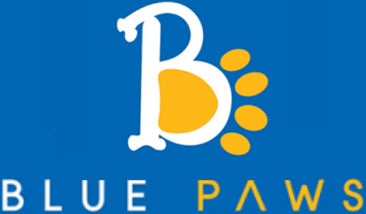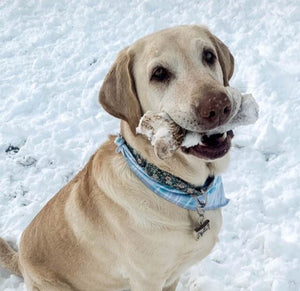Every dog owner wants the best for their dog, which starts by keeping them safe and healthy. Today we will be covering antler dog chews and if they are safe to give to your dog. You will also learn the best practices and how to choose an ideal antler chew size for your dog.
P.S. there is a certain antler type you should absolutely avoid as you will see below. Not all antlers are the same hardness making it essential to get informed.
Table of Content
Antler Dog Chew Safety Overview
We get it, we sell antler dog chews, of course we are going to be biased. However, I would be the first to tell you antler dog chews are not for every dog. Antler chews are a harder chew so they naturally come with concerns regarding teeth. I would never want anything bad to happen to someones dog, especially my own dogs who have enjoyed more than their share of antlers. In fact, my dogs have probably had more antler chews than 99% of dogs without incident. Countless others have experienced the same, however there are risks with hard chews so let's get down to the bottom of this.

Potenial Dangers
- Damaged teeth: Chewing hard objects, especially in an erratic or aggressive way can damage teeth
- Choking hazard: Antlers get smaller as dogs chew on them. If they get down to a small enough size they pose choking hazards
- Point and prod: This is especially true with "antler tines" which are more pointy on the end
Dental Dangers With Hard Chews
Harder chews are inherently more risky for teeth. This is especially true when rough play or chomping occurs. Antler chews should never be used in tug-of-war style games and certainly not a game of catch. This may seem obvious but they do occur and magnify the risk of hard chews. If there are many dogs fighting over an antler chew that can also increase the potential danger.
Another thing to watch for is if dogs try and chomp the antler dog chew in half. You want to see a dog chew and gnaw rather than trying to break it. If your dog is trying to chomp it in half or being overly aggressive or hyper active with the chew it is best to take it away. You can try again when they are calmer or maybe antler chews are not right for them, The important thing is to watch and observe how they interact with the chew. Note: Not all antler types or pieces are the same hardness - some are much harder as you will see below.

Different Antler Dog Chews - Different Hardness
If you haven't read our blog discussing the different types of antlers this may be a bit confusing but we will break it down really quick.
Antlers come from male members in the deer family and there are many different kinds of deer. Some deer have much harder antlers than others.
There are elk, moose, white-tailed deer, mule deer, caribou and more. However, the main antler dog chews you will see are elk, moose, white-tailed deer and mule deer. Many times white-tailed deer and mule deer will just be labeled deer antler dog chews.
Deer antler dog chews (white-tailed and mule deer) are much harder than elk, caribou and moose.
They are also generally smaller chews which means dogs can apply more pressure and try and break it rather than chew it. This poses two problems compared to elk, moose and caribou antlers. This is why we do not carry deer antler dog chews because the risk profile is much higher.
We have given them to our dogs under the right conditions and cuts but we are experts when it comes to antlers and understand how our dogs will respond.
Unfortunately, many of the dog chews you see in stores and large online shops are deer antler chews. This is because they are much more prevalent and less expensive - but they do not make good chews.
Moose antler chews (minus the base of the antler as you will see below) are much softer chews than deer antlers. This means dogs can access the delicious inner marrow faster, but the antler won't last as long. They do seem to be the favorite among dogs.
Elk Antler dog chews are in the middle. They are softer than deer antlers and generally a little harder than moose antlers. Elk antler dog chews are usually bigger promoting better chewing habits.
Caribou are somewhere between moose and elk chews but you will rarely see them for sale as caribou live in the far north tundra where antlers quickly degrade due to the conditions.
Not only do different species of antlers differ in hardness, but different "cuts" or pieces of the same antler can differ in hardness.

Antlers are comprised of several different parts and most are configured in a similar way.
There is the base of the antler, the beam of the antler and the tines of the antler. On moose there is also the "paddle" of an antler.
The beam is the main part of the antler attaching to the base, and tines come off of the beam. The tines are the point parts and are harder than the beam.
The tines are also smaller than the beam and pointy, increasing the potential danger.
The base of the antler is very dense and hard as it holds up the weight but it is bigger making it more likely for dogs to gnaw.

The Right Antler Dog Chew Size
A big safety factor is getting the right size chew for your dog. Improperly sized chews increase the danger.
For one, too small of chews can promote a choking hazard. You do not want to give your dog a chew they might try and swallow. This is why it is important to remove antler chews or any chew when they get to small.
Another problem with small for size chews is they can tempt dogs to chomp and "break" rather than gnaw and chew. Dogs are able to apply more pressure on small chews which you do not want.
This is why we have made multiple antler dog chew size guides and a complete post on how to properly select the right size chew.

- Follow a size guide when selecting antler dog chews
- Remove antler dog chews when they get too small
- Observe dog for proper behavior and if the chew fits
Antler Chews Benefits
- Natural and Nutritious: Antlers are rich in minerals like calcium and phosphorus, making them a healthy alternative to synthetic chews.
- Durable and Long-Lasting: Antler chews are durable, lasting longer than many other dog treats, which reduces the need for frequent replacements.
- Eco-Friendly: Antlers are shed naturally, making them an environmentally friendly option for pet owners seeking sustainable pet products.
Conclusion:
We can't control every factor impacting our dog's health, stress and anxiety but we can help them in many ways. We hope this article helped provided ideas to reduce stress and anxiety for your dog. Feel free to share your tips as we are happy to hear!
Having a spot just for your dog is essential so they can feel safe and secure.
Exercise is essential to reduce stress and anxiety
Antler chews are a great outlet for excess energy and provide much needed stimulation
Frequently Asked Questions
How long can dogs be anxious?
There is no definite answer. This depends on a number of factors including your dog's personality, the causation, much more.
Are other chews good for anxiety?
Yes assuming they are safe there are other good chews. We recommend antlers because of the many benefits.
Will chews help with separation anxiety?
While we can't be certain, chews can help with separation anxiety as they give a positive outlet.
Do all dogs experience anxiety?
Dogs are unique and experience things in different ways. However, it is safe to assume they all experience anxiety at times but some are much less bothered.




